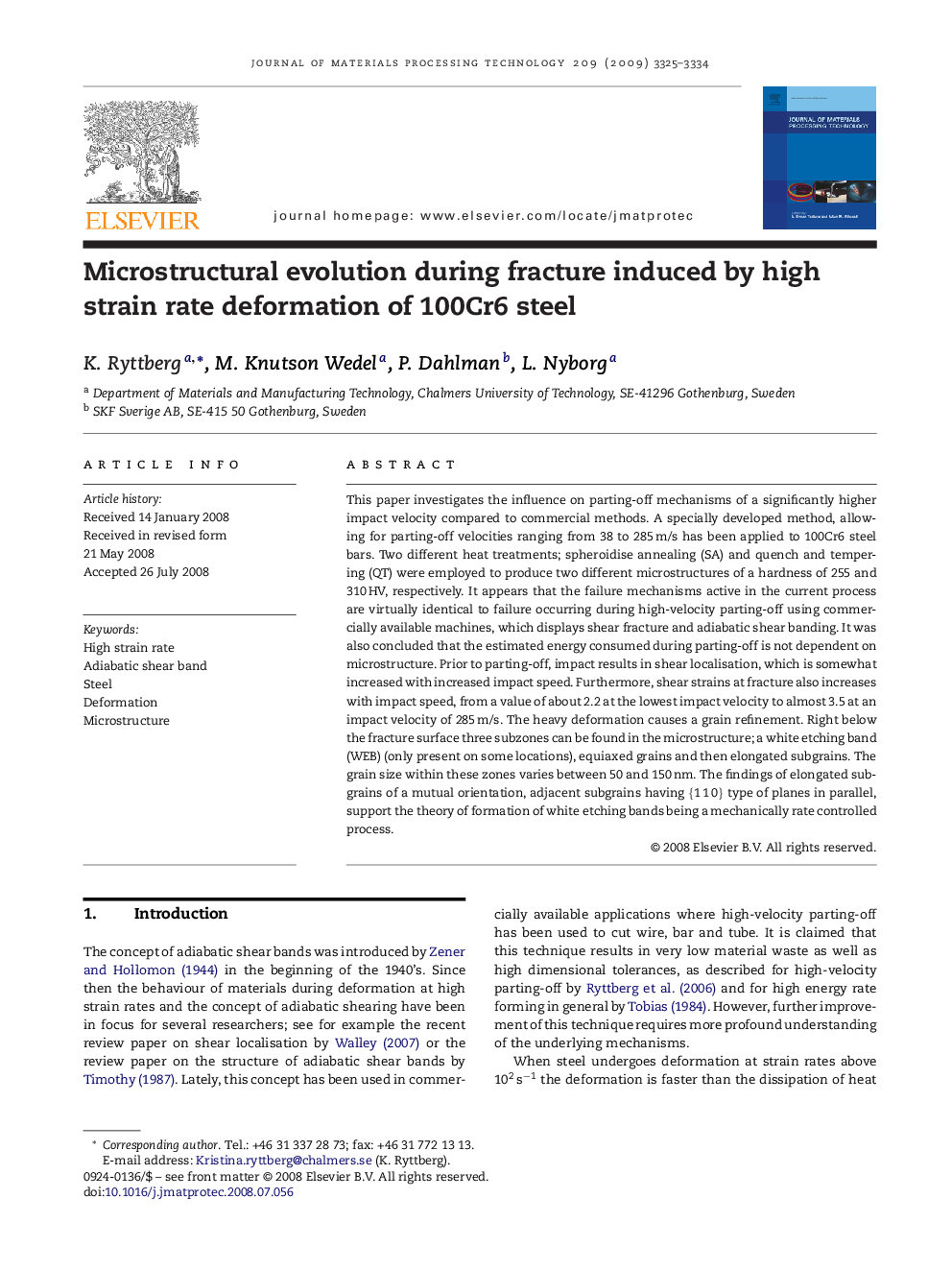| Article ID | Journal | Published Year | Pages | File Type |
|---|---|---|---|---|
| 791394 | Journal of Materials Processing Technology | 2009 | 10 Pages |
This paper investigates the influence on parting-off mechanisms of a significantly higher impact velocity compared to commercial methods. A specially developed method, allowing for parting-off velocities ranging from 38 to 285 m/s has been applied to 100Cr6 steel bars. Two different heat treatments; spheroidise annealing (SA) and quench and tempering (QT) were employed to produce two different microstructures of a hardness of 255 and 310 HV, respectively. It appears that the failure mechanisms active in the current process are virtually identical to failure occurring during high-velocity parting-off using commercially available machines, which displays shear fracture and adiabatic shear banding. It was also concluded that the estimated energy consumed during parting-off is not dependent on microstructure. Prior to parting-off, impact results in shear localisation, which is somewhat increased with increased impact speed. Furthermore, shear strains at fracture also increases with impact speed, from a value of about 2.2 at the lowest impact velocity to almost 3.5 at an impact velocity of 285 m/s. The heavy deformation causes a grain refinement. Right below the fracture surface three subzones can be found in the microstructure; a white etching band (WEB) (only present on some locations), equiaxed grains and then elongated subgrains. The grain size within these zones varies between 50 and 150 nm. The findings of elongated subgrains of a mutual orientation, adjacent subgrains having {1 1 0} type of planes in parallel, support the theory of formation of white etching bands being a mechanically rate controlled process.
